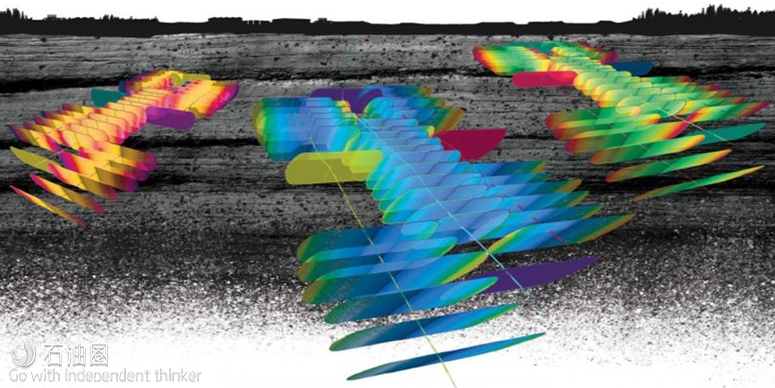Reveal Energy Services has announced the commercialization of the FracEYE frac hit analysis service to expand the industry’s knowledge base about this critical issue of parent well-child well communication.
With ongoing infill development, frac hits from the pressure communication between wells can cause significant production decreases in parent wells. Child wells can also underperform. The goal of Reveal Energy Services was to clearly define the effect of frac hits and allow operators to make timely adjustments to their completion designs.
The foundation of the service is the company’s pressure-based technology. The service categorizes the type and severity of interwell communication by measuring the pressure response from a parent well as hydraulic fracturing proceeds normally in child wells. A team of company geoscientists and completion engineers uses the pressure-response timing and geomechanics to classify the observed response into one of four categories:
- direct fluid transport: large and rapid overall pressure increase in the offset well;
- fluid migration: gradual pressure increase that lingers post-stage completion;
- undrained compression: instantaneous pressure response in the offset well; and
- no signal: no significant pressure change in the offset well.
A South Texas operator was concerned about frac hits in a four-well pad directly offsetting two parent wells stacked into separate landing zones. A Reveal Energy Services’ team, applying the FracEYE service, found there was little communication vertically between the two landing zones. There were direct frac hits and fluid migration when completing wells in the same landing zone, directly offsetting the parent well. Diverter seemed unsuccessful in mitigating these frac hits. The team also classified several major frac hits caused by faults crossing the pad. With this information, the operator had actionable insight into the effect of frac hits.
“Because infill development and frac hits are a pressing concern, our goal was to develop a service with a fast turnaround time so operators would have the information to update their next completion designs, if necessary,” Sudhendu Kashikar, CEO of Reveal Energy Services, said. “We’re pleased that we can add to the understanding of frac hits.”
The FracEYE frac hit analysis service complements the company’s IMAGE Frac pressure-based fracture maps with five services that are now field-proven in more than 8,000 hydraulic fracturing stages in the US and Canada
How does this all work?
The new FracEYE frac hit analysis service categorizes the type and severity of interwell communication by measuring the pressure response from a parent well as hydraulic fracturing proceeds normally in child wells. With this information, you can minimize the effect of frac hits.
The creation of a hydraulic fracture results in a pressure increase in the surrounding fluid-filled porous medium. A combination of fluid migration and rock compression creates the pressure response we see in a parent well.
Looking at the timing of the pressure response, the compression forces can be felt instantaneously over hundreds of feet while the pressure increase can take minutes to hours because of fluid migration. A team of our geoscientists and completion engineers uses the timing and geomechanic principles to classify the observed pressure response into one of four categories
With the FracEYE service, you can decide if or when you need to change the stimulation treatment to minimize the effect of frac hits and the potential adverse effect on parent well production.
A Canadian operator working in the Montney, developing the D1 and D2 horizons shown in the 3D view, top left, was interested in learning how child well completions affect parent wells. We deployed our FracEYE service to quantify and categorize the induced pressure in the parent wells to find out.
The treatment data for the stage being fracked in D2-6H is shown bottom left. The induced stress on the parent wells is shown in the top-right track. We see direct fluid communication with the adjacent D2 parent well, shown by the blue curve, while we see fluid diffusion toward the D1 parent well, shown by the green curve. This analysis is supported by the temperature data, bottom right.
The data showed an increasing effect of fluid communication between the parent and the child well toward the heel of both wells. Direct fluid communication between wells is restricted to wells within the same horizon. The pressure responses also indicate some faulting near the middle of the lateral section. The 3D view shows the categorized signals while fracking the three child wells affecting the D1 parent well.
With the FracEYE frac hit analysis service, the operator had insight into zonal isolation, interwell communication, and effective fluid pathways created by the fracture network. The operator made an informed, better decision about when to change the stimulation treatment to minimize the effect of frac hits and the potential adverse effect on parent well production.

 石油圈
石油圈
